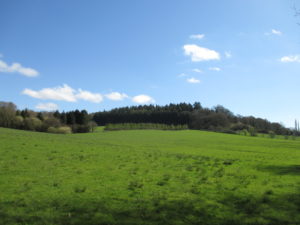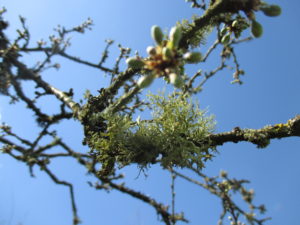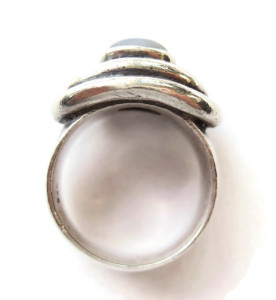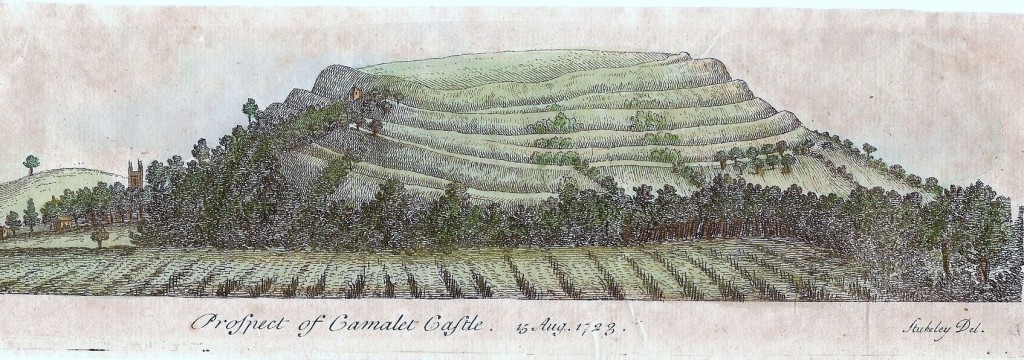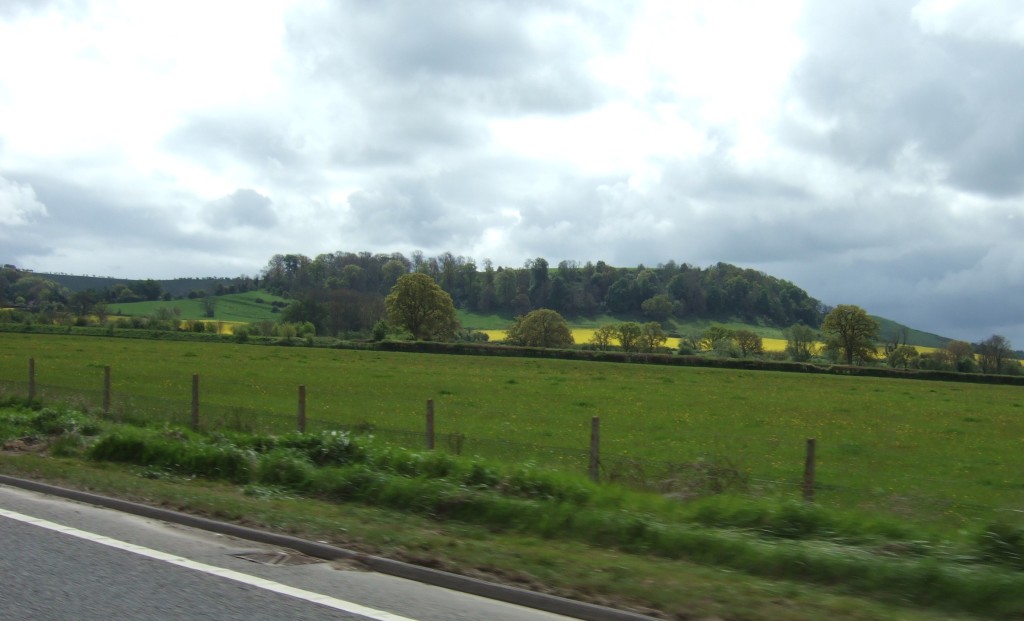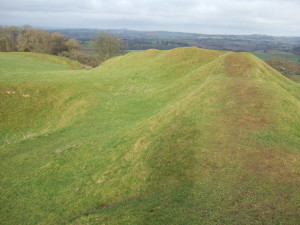Yesterday was a beautiful sunny spring Sunday, and we went for a walk in the countryside around the south Wiltshire village of Swallowcliffe.
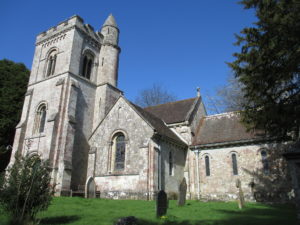
The Church of St Peter, Swallowcliffe, built 1842-1843. There was a service going on so we didn’t go inside.
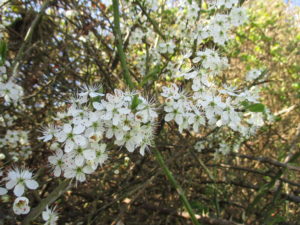
Beautiful blackthorn (Prunus spinosa) blossom: hopefully there’ll be a good sloe crop from these in the late summer.
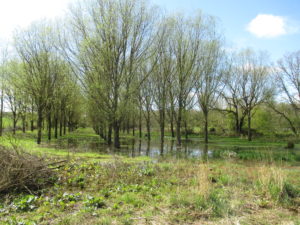
(Slightly drunken shot) of a soggy willow plantation. The area is very damp, with many springs, so willows seem to be a popular choice of commercial timber round here.
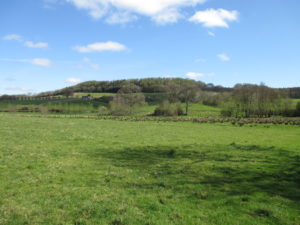
Castle Ditches, an Iron Age hill fort, and beneath it Withyslade Farm.
Castle Ditches is an Iron Age hillfort. The Victoria County History of Wiltshire says of the site: ‘An Iron-Age hill fort was called Oakley Castle in the 14th century and later, its ditches and banks, enclosing 25 acres, were called Castle ditches in the 16th century, and the whole earthwork afterwards took the name Castle Ditches.’
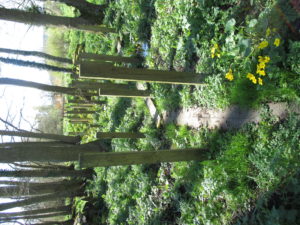
A view from the public footpath of the boardwalk through the boggy gardens of Spilsbury Farm, complete with grab posts and marsh marigolds (Caltha palustris).
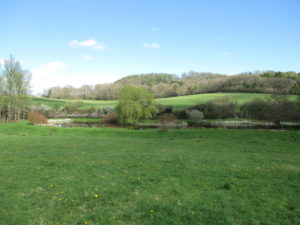
One of several man-made ponds in the area exploiting the stream and springs. You can just make out two swans, one of which (on the left) is bottoms-up, and the other (on the right) we think was nesting on the island.
We saw some brimstone and tortoisehell butterflies and heard a raven cronking in the distance. It was a joy to be out and about in the spring lusciousness and to see the sun again after such a drab winter.
